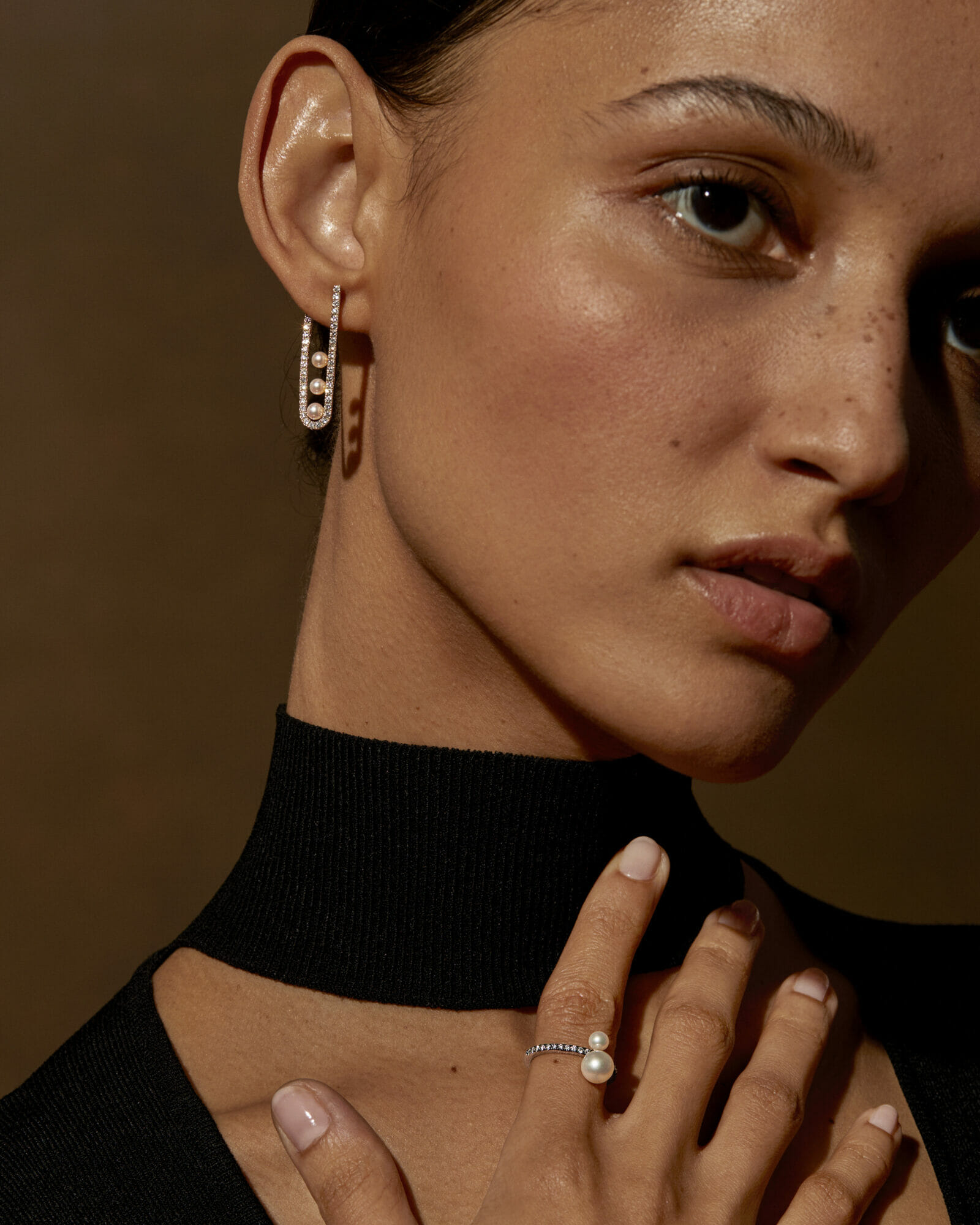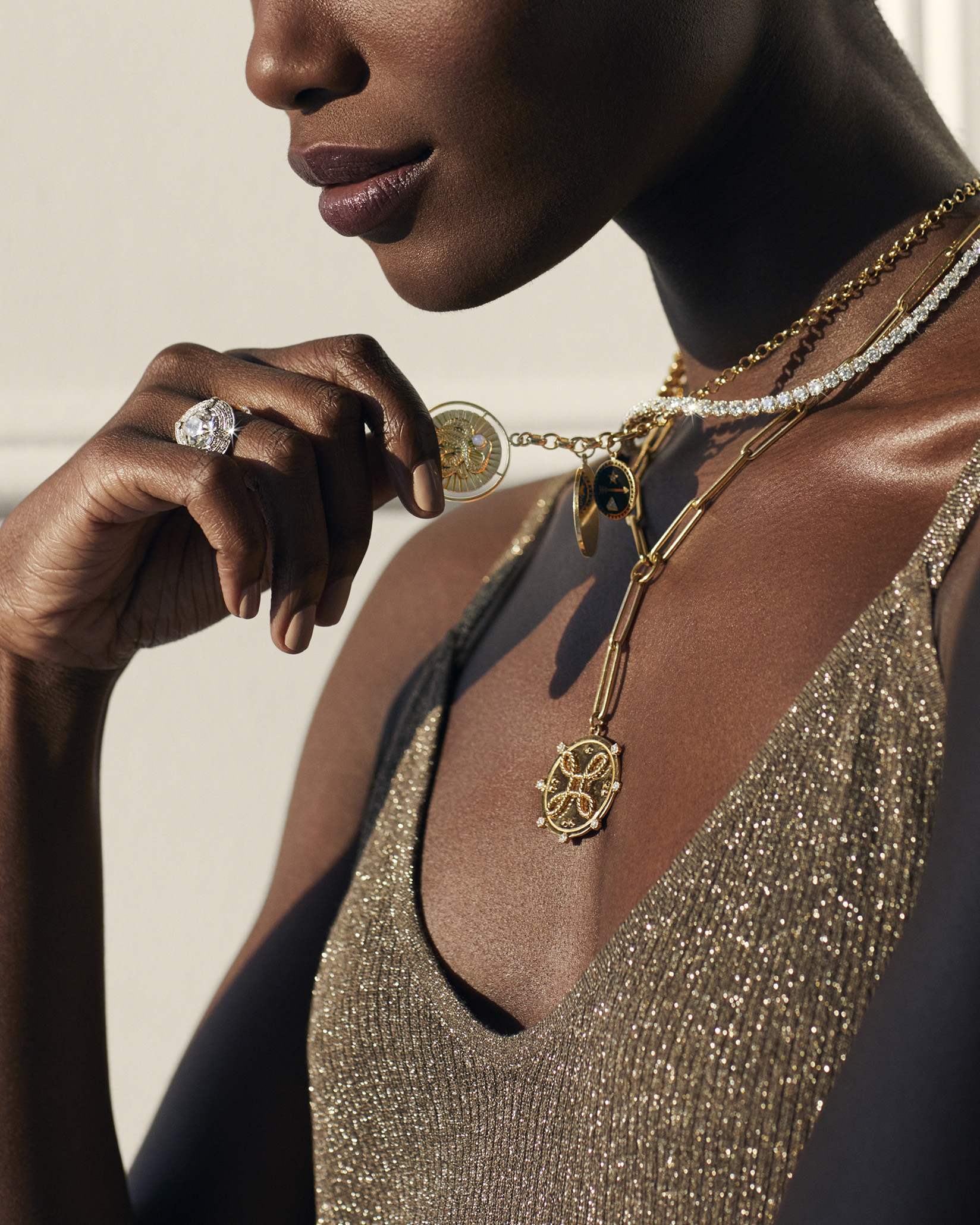The Big Ask: Questions to Ask When Shopping For a Diamond
Our favorite diamond pros on the questions you should ask while stone shopping—and the answers you can know right now.
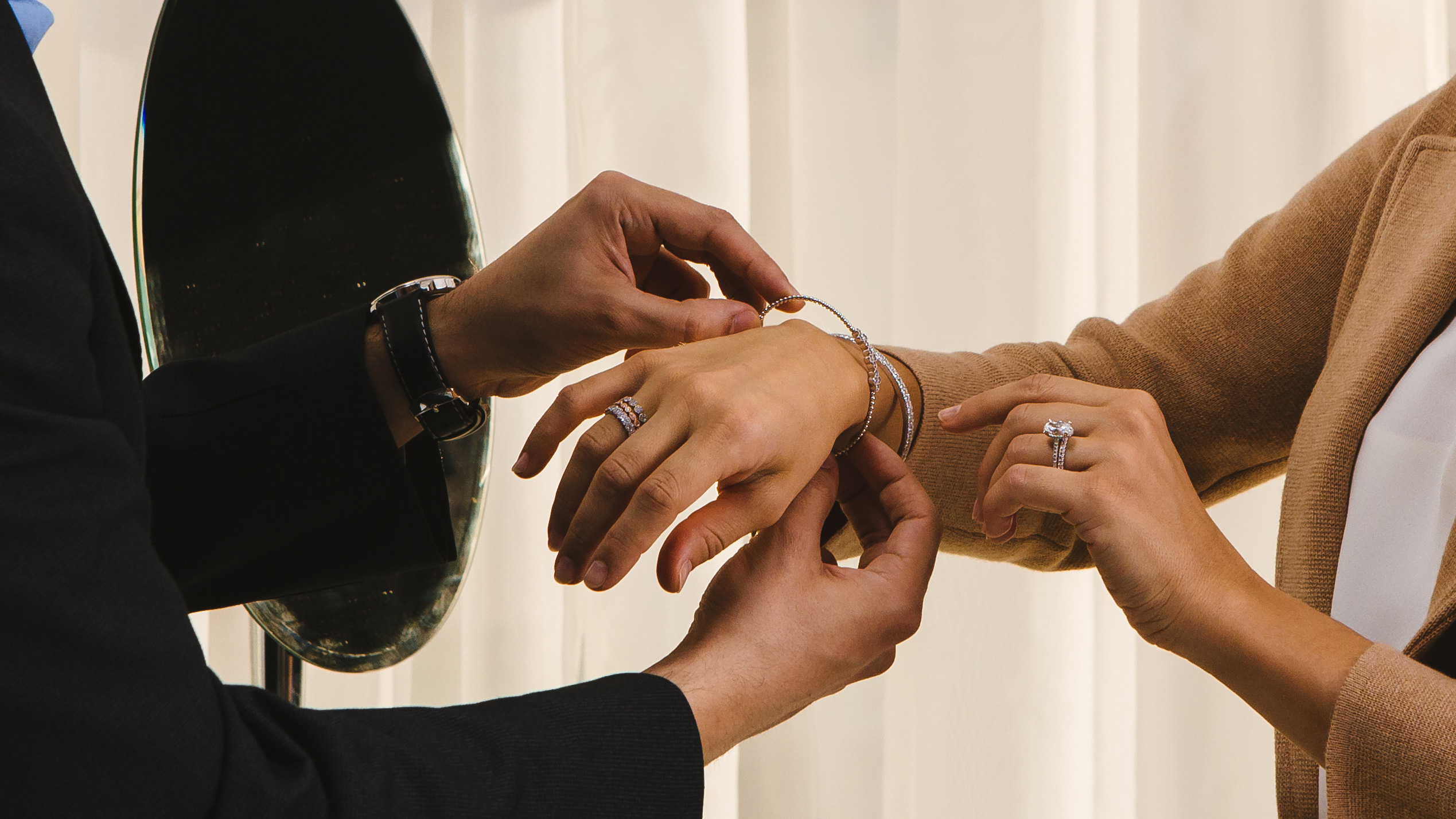
Yes, buying a diamond is a commitment. It can also be so much fun. From exploring cuts and sizes to learning about artistry and history, choosing a natural diamond isn’t just a shopping trip; it’s also a very luxe adventure. (Plus, what beats the moment when you see a gleaming gem scatter sparkles of light all over your hand? Let’s be real: not much.)
To prep for this ohhh-inducing experience, it’s best to know some essential etiquette surrounding your purchase—namely, that it’s good form to be curious about your stone. “Of course we want you to ask questions!” says Quig Bruning, Sotheby’s Head of Jewelry for the Americas. “How else can we know what you’re looking for? And just as important, how else can you know what you’re getting?”
In the Beginning: Your Diamond’s History
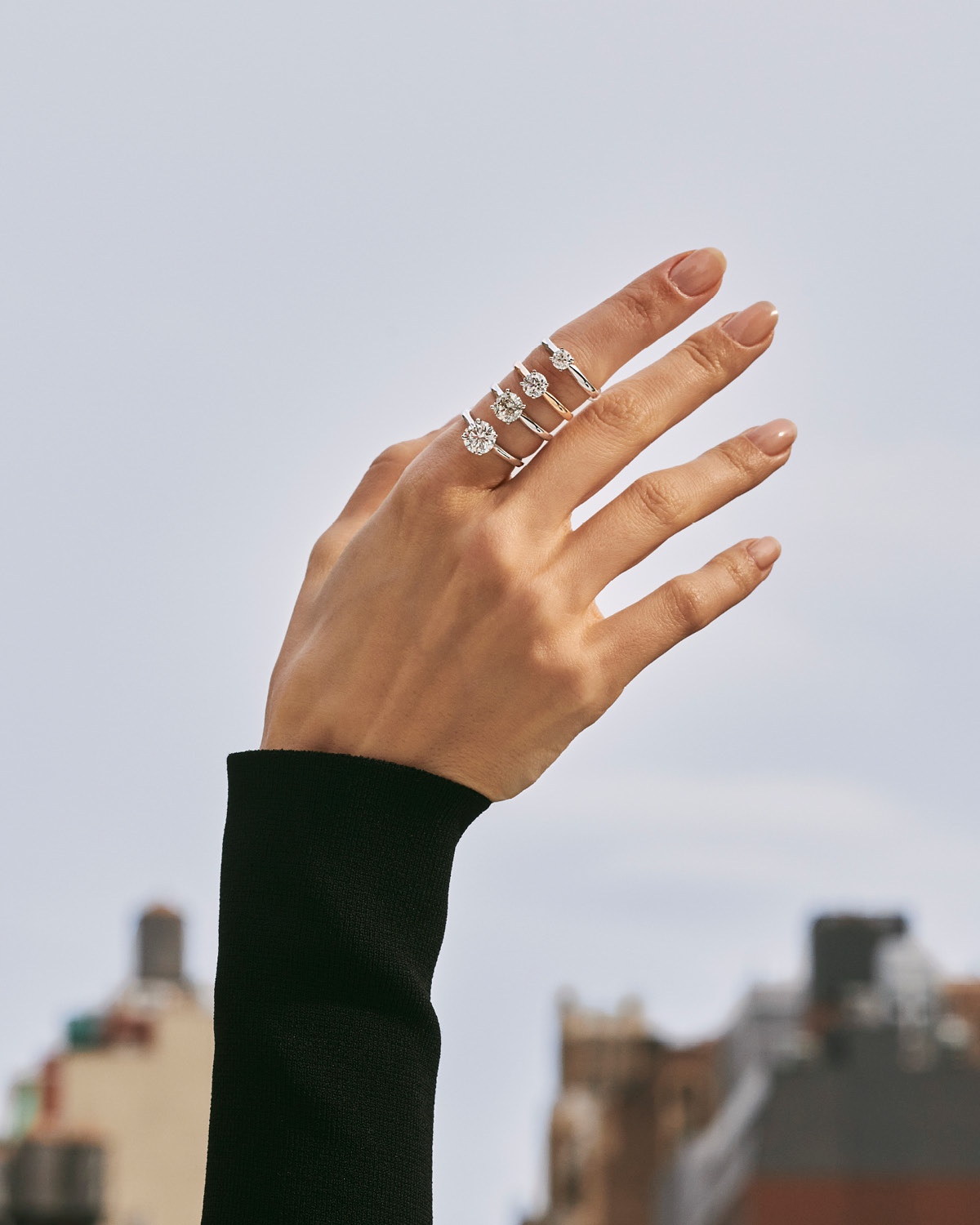
Much like Marvel superheroes, a stone’s origin story is vital. “A diamond is based on the mysterious inner workings of our earth,” says fine jewelry designer Anna Sheffield, who designed Eva Longoria’s engagement ring, along with pieces for Jennifer Lawrence and Kerry Washington. “That equates to magic in my mind.”
The advantage of a natural diamond, of course, is that it’s harnessed 100% of that magic, developing through the power of our planet for hundreds of millions of years. Thanks to incredible advances in science, natural diamonds are recovered ethically.
As for the big difference between antique and modern stones, gemologist and Greenwich Street Jewelers partner Christina Gandia Gambale sums it up this way: “An antique diamond is one that was cut over 100 years ago or one cut in an antique shape… These diamonds were faceted before technology was a tool in diamond cutting, and are appreciated for their rarity, history and the craftsmanship that the master cutter used to perfect the diamond at a time when skill was paramount.” Created with a more subtle glimmer than their modern counterparts, Bruning describes them as “cut to glow in the candlelight.”
Prefer a newer stone and a more modern shape like a princess, square or pear cut? Don’t worry—even “new” natural diamonds are older than some of Earth’s neighboring galaxies, and just as mesmerizing.
Steal These Questions About Origin:
- Is it a natural diamond?
- Has it been laser inscribed for easy tracking?
All That Glitters: Getting Your Best Value
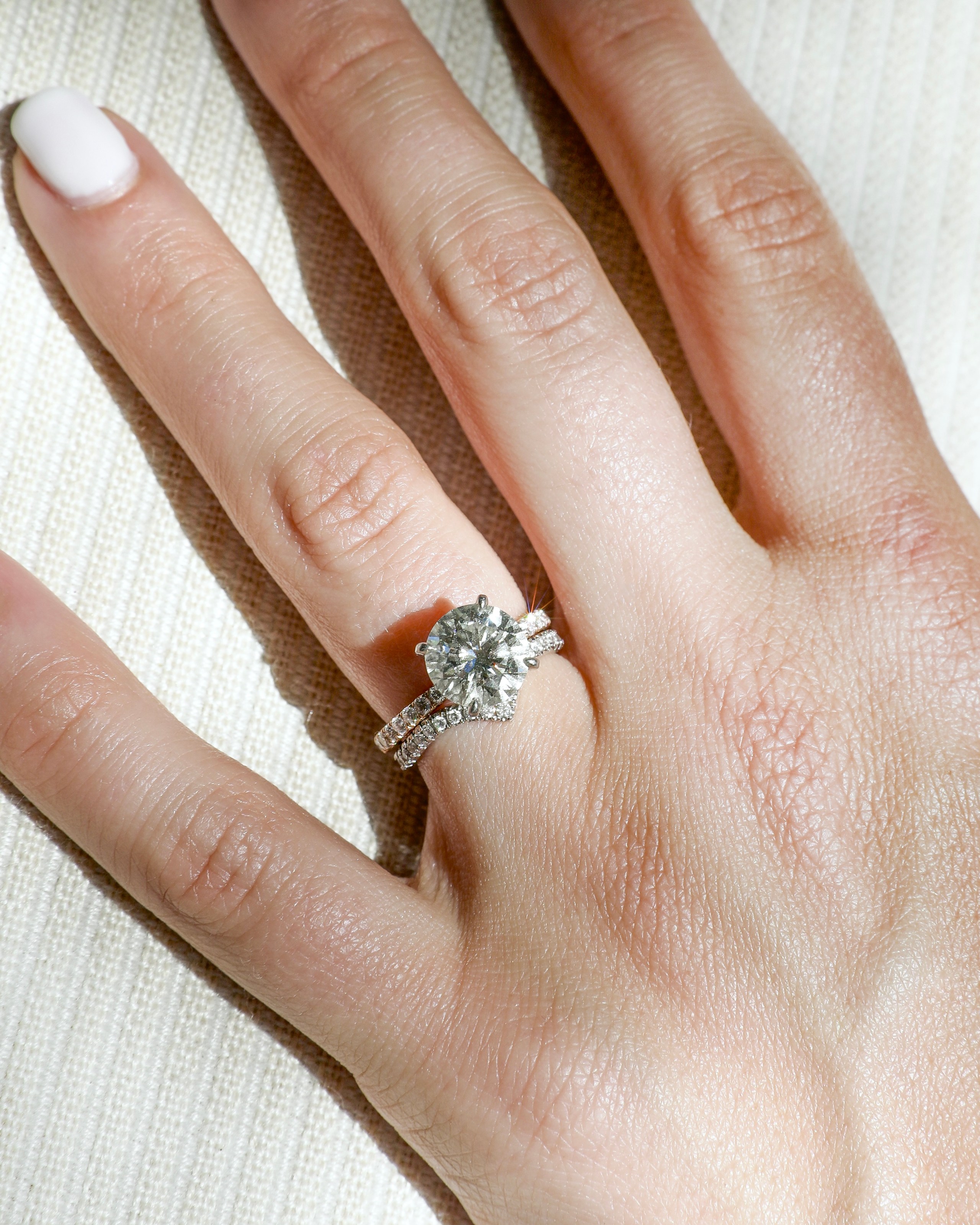
“The first two questions you need to ask yourself when looking for a diamond are, ‘What’s my budget?’ and ‘Do I love this, or does the person I’m shopping for love this?’” Bruning says. “There’s this idea that ‘budget’ is crass, but the truth is, you can get something beautiful at any price point, so don’t be afraid to know your price point.” It’s important to note there’s no one amount that’s “right” to spend on an engagement ring or any diamond. Plus, it’s perfectly fine to go online and browse pieces to get a sense of the price range, or even to visit a jewelry store and simply ask. (After all, Pretty Woman is just a movie and actually inquiring about something you want to buy is more than okay—it’s encouraged!)
Designer Eva Zuckerman, Co-founder and Creative Director of the label Eva Fehren, also notes that value and size aren’t always the same. “One of the most common assumptions we see is that a higher carat weight equals a larger-appearing stone,” she explains. “We often have clients who are fixated on carat weight until we show them two stones with the same carat weight and shape, but that take up completely different amounts of real estate on the finger! Ultimately, people should focus on what the stone looks like on.”
After all, loving how it looks when you wear it is the ultimate sign of luxury.
Steal These Questions About Value:
- How much is the diamond?
- Does the diamond have a grading report?
- Do you have similar stones in a different price range I could see?
- Do you have a diamond upgrade program?
- What is your return policy?
The Fifth C: Custom
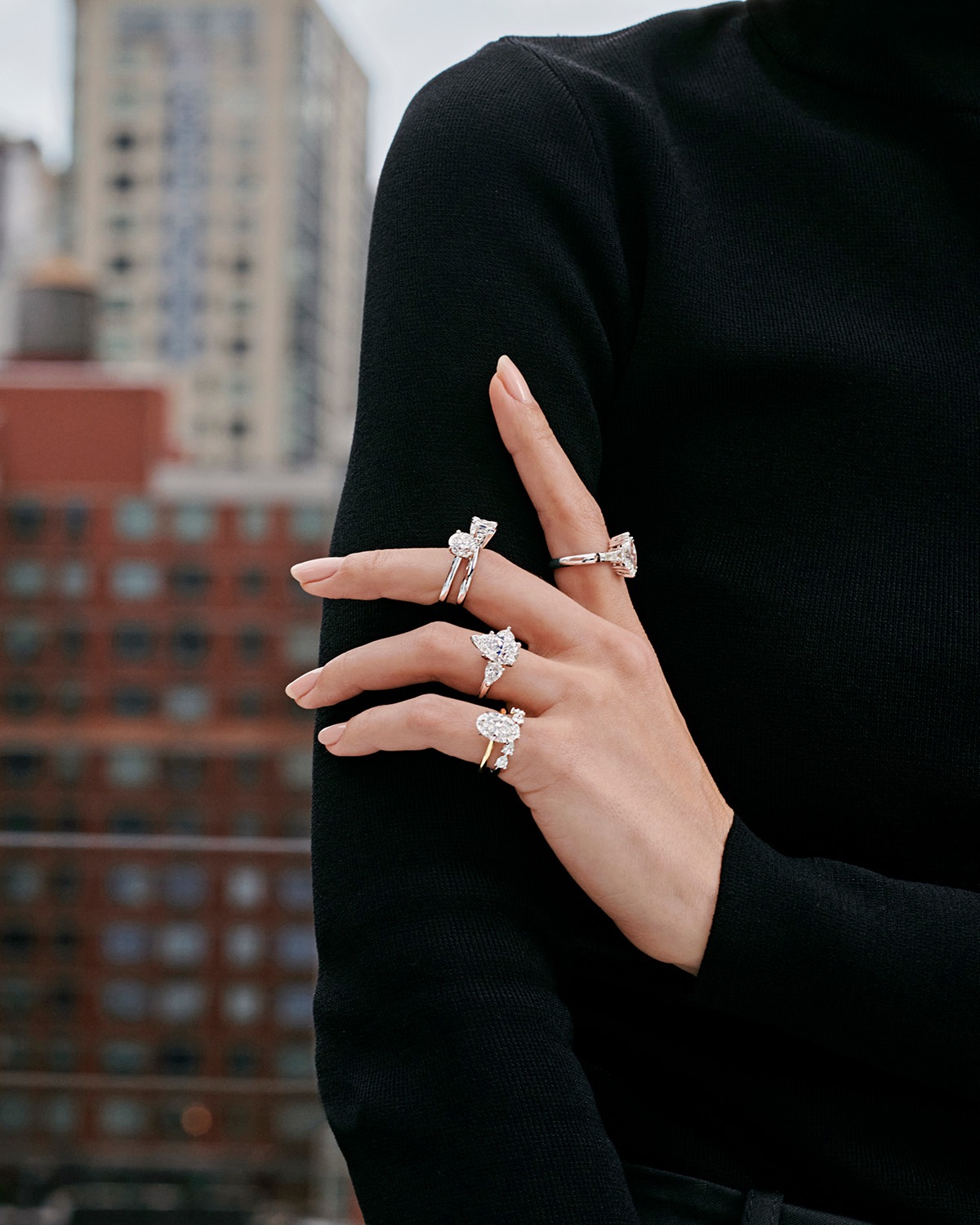
Supreme x Louis Vuitton isn’t the only luxury collaboration available. Thanks to custom design services from renowned artisans, you can invest in a one-of-a-kind collab that takes your diamond purchase to the next level. But like romantic relationships and pickleball practice sessions, communication is key for optimum results.
“We start off with multiple sketches and stone layouts,” explains Jillian Sassone, Founder of Marrow Fine Jewelry, which specializes in reworking heirloom pieces into modern stunners. “Once we land on a design with the client we move to the CAD (computer-aided design) and rendering phase to ensure the layout and design are exactly what the client wants. Though the computer can’t accurately show the beauty of the stones, it does give an accurate depiction of the final design.”
Customization can also happen with something as simple as resizing—though be prepared for that to take some time as well. “The shank of a ring can be safely sized up or down a full size without risking any damage,” explains Zuckerman. “Any more than that and an entirely new shank will probably have to be made. Sizing can take anywhere from a few days to a month depending upon the intricacy of the piece.”
When possible, always know the size of the ring before ordering the piece. And if you must be sneaky? Measure a piece they already own (that you’ve seen them wear on their ring finger!!!) with a piece of string, then align that string with a tape measure or ruler for an exact number.
Steal These Questions About Customization:
- How long is the process to create a custom ring?
- Can I see some past pieces you’ve customized?
- Does the ring have a warranty?
- Does this design require any special care?


